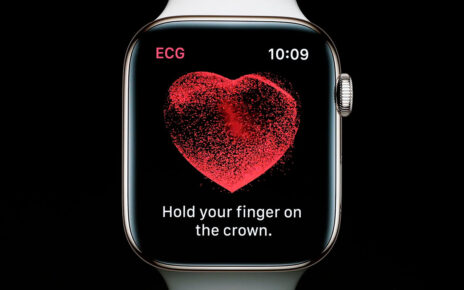For years, extracting usable data from PDFs has vexed businesses, governments, and researchers alike. PDFs function as stubborn containers for everything from scientific studies to official records, preserving formatting at the expense of extractable data. The traditional method—optical character recognition, or OCR—has served as a workaround, turning images of text into machine-readable strings. Yet the format’s print-era origins, coupled with complex layouts and scanning artifacts, keep many PDFs resistant to reliable data extraction. This struggle stands as one of the most persistent bottlenecks in data analysis and machine learning, hindering automation, reproducibility, and deeper insights across sectors.
The PDF Data Extraction Challenge: Why PDFs Remain a Bottleneck
PDFs were designed to preserve precise layouts for print, not to enable fluid data mining. As a result, many PDFs look like digital pictures of words rather than flexible text sources. In practice, this means crucial information can be locked behind image layers, multi-column formats, and embedded charts or tables that don’t translate cleanly into plain text. For teams trying to automate data capture, the problem is twofold: the content is often not stored as searchable text, and when OCR does attempt to read it, the results can be unreliable due to layout complexity, font variety, or image quality.
Researchers have long quantified the scope of the challenge. A large share of the world’s organizational data remains unstructured, trapped in documents rather than neatly organized in databases or spreadsheets. Much of this data is difficult to extract, decode, or reuse, especially when it resides in legacy documents that predate modern digital workflows. The impact is pervasive: archives and records management programs, digitization efforts for scientific and historical materials, and regulatory or governance contexts all confront significant hurdles when attempting to convert PDFs into usable data.
The friction is particularly acute in documents created or scanned under non-ideal conditions. Two-column layouts, dense tables, and complex figures can confound even sophisticated OCR systems. When image quality is degraded—due to scanning artifacts, compression, or age—the OCR process may misread characters, misclassify rows and columns, or skip lines altogether. In many cases, the ambiguities force practitioners to intervene manually, slowing workstreams and increasing the risk of errors in downstream analyses.
The consequences ripple across industries that rely on precise records. In public services and government work, the ability to digitize and reuse old records is essential for accountability and efficiency. In journalism, researchers frequently rely on historical documents and datasets that aren’t readily machine-readable, complicating fact-checking and data-driven storytelling. In finance and insurance, even minor OCR mistakes can cascade into misinterpreted figures or misstated summaries, underscoring the need for cautious, transparent data pipelines and robust quality assurance.
The core problem, as observed by data practitioners, is that PDFs embody a convergence of print-era design, legacy scanning practices, and archival parity with human-readable formats. All of this makes the extraction problem not merely technical but structural: the data may exist in images rather than text, be distributed across multiple columns, or be embedded in figures whose textual labels are themselves the target of OCR. The result is a landscape in which the same document can be easy to read for humans but extraordinarily hard for machines to interpret with high fidelity without extensive post-processing and human oversight.
To summarize, PDFs’ durability as a format is both a blessing and a curse. It preserves documents exactly as intended for human readers, but it also enshrines formatting constraints that hinder automated data extraction. The practical effect is a persistent barrier to scalability in data analysis, where organizations need reliable, repeatable, and auditable extraction methods to turn PDFs into actionable information.
The Evolution: From Traditional OCR to Multimodal LLMs for Reading Documents
Traditional optical character recognition emerged in an era when the primary objective was to convert printed text into machine-readable characters. The foundational work, dating back to the 1970s, relied on pattern matching: analyzing light and dark pixels to identify character shapes and then assembling those shapes into words. Early OCR systems performed well on clean, straightforward documents but faltered with unusual fonts, multi-column layouts, complex tables, and subpar scans. The technology earned a reputation for predictable but manageable error modes, which allowed practitioners to anticipate and correct common mistakes as part of established workflows.
A landmark in OCR history was the commercial development of technology that could assist people with reading tasks. Pioneering devices and software focused on recognizing basic characters from pixel arrangements, offering a practical solution for accessibility and data capture. Yet, as documents grew more intricate—featuring multi-column pages, dense tabular data, layered graphics, and handwriting—the limitations of pattern-matching OCR became increasingly apparent. The reliability of OCR remained tied to the predictability of layouts, which could not always be guaranteed across diverse sources and decades of document production practices.
In parallel, a broader shift occurred in artificial intelligence: the rise of transformer-based large language models (LLMs) that could ingest mixed data types and reason about content in context. Rather than processing characters in a pure pixel-by-pixel fashion, modern approaches began to treat documents as composite signals—text, layout, and images—that informed understanding. Vision-capable LLMs, developed by major tech entities, leverage multimodal training to interpret both textual content and its visual presentation. This enables them to recognize relationships between textual elements and their spatial arrangement, interpret headers, captions, and body text, and understand the flow of information across a page.
The practical implication of this shift is profound. Multimodal LLMs can read documents by considering layout context and textual content in tandem, rather than treating text in isolation. This holistic approach offers several potential advantages: better handling of complex layouts, more accurate interpretation of tables, and the ability to distinguish document elements such as headers, footnotes, and body text. In other words, the model is not merely transcribing characters but parsing the document as a structured whole, which can lead to more reliable extractions in real-world scenarios.
Nonetheless, the transition from traditional OCR to LLM-powered OCR comes with its own set of trade-offs. The context-aware approach can yield superior results in many cases, but it is not inherently flawless. LLMs operate as probabilistic prediction machines: their outputs reflect likelihoods rather than certainties, and they can still produce errors that are difficult to trace. Even when the model is accurate most of the time, occasional hallucinations or misinterpretations can occur, especially in documents with ambiguous typography, fragmented handwriting, or sections where text is illegible. The risk is not merely a small misread; in critical contexts such as financial statements or legal documents, a single misinterpretation can propagate into flawed conclusions.
Industry assessments have underscored both the promise and the challenges of LLM-based OCR. Some traditional OCR tools, such as those designed specifically for text extraction from forms and structured documents, remain strong performers in certain use cases, offering high reliability with defined constraints. These tools can be particularly effective when the data patterns are predictable and the text is well-structured, enabling straightforward rule-based extraction and validation. However, when confronted with irregular layouts, mixed languages, handwritten notes, or nonstandard formatting, LLM-based approaches tend to excel due to their broader contextual awareness and ability to glean meaning from surrounding content.
A key advantage of LLM-based document reading is the expansive context window—the amount of text the model can consider at once. A larger context window allows the model to analyze longer documents in segments while maintaining coherence across sections. This capability is especially valuable for PDFs that are bulky, multi-page, or include scanned content spanning many pages. Practitioners report that the ability to process documents in portions, yet retain a sense of overall structure, helps with complex tasks such as deciphering long tables, tracking cross-references, and distinguishing between headings and body text.
That said, the performance of LLM-based OCR is not uniform across providers. Leading players vary in how well they handle handwriting, how they interpret ambiguous table structures, and how effectively they manage the trade-off between speed and accuracy. Some models demonstrate robust performance with handwritten notes and annotations, while others struggle with certain scripts or non-Latin typography. The field remains dynamic, with ongoing optimization, fine-tuning, and the introduction of domain-specific capabilities—each aiming to improve reliability for enterprise-scale document processing.
The rise of AI-based reading capabilities has also reshaped practitioner expectations. In workflows that require high throughput and strict quality control, human oversight remains a critical ingredient. Even when LLM-based systems perform well on average, there is a continued need for review and validation of outputs, particularly for high-stakes documents. The paradigm is increasingly moving toward human-in-the-loop designs, where automated extraction is coupled with human verification to ensure accuracy, auditable provenance, and accountability in data pipelines.
Another dimension of the evolution involves benchmarking and real-world testing. Attempts to quantify OCR performance across diverse document types—scanned scans, digital-born PDFs, forms with tabular data, and handwritten content—reveal that no single solution consistently outperforms all others in every scenario. The best strategies often involve a hybrid approach: using traditional OCR for straightforward text extraction in predictable formats, while deploying multimodal LLM-based methods for more complex layouts and for content where layout cues significantly impact data interpretation.
In sum, the OCR landscape has moved beyond the era of simple character recognition toward a sophisticated, context-aware paradigm. Multimodal, vision-enabled LLMs promise richer interpretation of documents by integrating textual content with page structure. This shift opens doors to more accurate extraction from complex PDFs, but it also introduces considerations about reliability, prompt design, privacy, and the need for human oversight in critical applications. The balance between innovation and trust remains central as organizations decide how to incorporate these technologies into their data pipelines.
Field Trials, Promises, and Pitfalls: Real-world Performance and Lessons Learned
As demand for robust document processing grows, industry players have begun testing and deploying OCR solutions that rely on multimodal AI models. Some vendors present ambitious capabilities designed to handle complex layouts, dense tables, and mixed content, while others emphasize the efficiency and scalability of their approaches. In practice, however, performance can vary widely depending on document characteristics, deployment contexts, and the quality of training data that underpins the models.
One notable development in this space involves a French AI company that has built smaller language models and released an OCR-focused tool aimed at processing documents with intricate layouts. Market observers watched with cautious optimism as the product was introduced, highlighting the potential for specialized systems to excel at structured document processing with low latency. Yet independent assessments and user reports soon surfaced, calling into question performance in certain real-world cases. In particular, a test of an OCR-specific model on a document featuring a multi-column table with nonstandard formatting revealed limitations, including repeated entries and misinterpreted numerical values. The discrepancy between promotional claims and practical outcomes underscored the enduring challenge of ensuring robust accuracy in diverse, imperfect inputs.
Industry observers also noted that handwriting recognition remains a difficult frontier for AI-based OCR. Several demonstrations indicated that models can struggle with cursive or stylized handwriting, sometimes producing outputs that resemble plausible text but do not reflect the original content. Critics pointed to the risk of hallucinations—where the model outputs text that seems credible but is inaccurate or invented—especially when the handwriting is faint, inconsistent, or overlaps with other elements on the page. This challenge is particularly acute for archival material, historical docs, and forms where precise numeric data and contextual cues matter for downstream decision-making.
In contrast, certain contemporary models have demonstrated notable strengths in handling large documents with handwritten components. A prominent AI system, when provided with a substantial context window, has shown capability in processing extensive PDFs and breaking them into manageable segments without losing track of the overarching document structure. This ability to work through large documents in parts—maintaining continuity across sections—addresses a meaningful bottleneck in processing long-form material, such as technical reports, legal bundles, and multi-page government records. Practitioners highlight that a broader context window can help disambiguate ambiguous elements by providing surrounding cues that would inform a human reader.
Nevertheless, reliability remains a prime concern when relying on ML-based OCR for critical tasks. Experts warn that these models are probabilistic and can misinterpret lines that repeat or reappear across pages, making it easy to overlook a subtle but consequential misalignment. In practice, this means that automated extraction may require post-processing steps to detect inconsistencies, resolve ambiguities, and flag potential errors for human review. The risk of accidental misinterpretation is particularly acute in financial statements, legal texts, or medical records, where precise figures and their associated descriptions are essential to correct interpretation and safe decision-making.
Another dimension of real-world testing concerns the handling of tables. Tables pose a persistent challenge for OCR systems because they involve structured data, row and column headers, and varying alignment. When a model misaligns a table, it can swap values or mislabel data under the wrong header, yielding outputs that look plausible but are incorrect. Such misinterpretations can cascade into flawed analyses, erroneous summaries, and unreliable datasets that other teams will rely upon for modeling or reporting. Therefore, even when a model performs admirably on narrative text, tables can be a fragile weak point that requires targeted evaluation, handcrafted checks, and domain-specific validation rules.
Security, privacy, and governance considerations also come into play in field trials. The deployment of document-reading AI often touches sensitive material, such as financial records, medical files, or confidential government records. Organizations must balance the benefits of automation with the necessity of protecting personal data and ensuring compliance with privacy regulations. This includes considerations around model access, data retention policies, and the risk of data leakage when processing documents in cloud-based environments. In complex enterprise settings, a layered approach that combines on-device or secure-processing options with carefully controlled cloud processing can help mitigate risk while enabling advanced OCR capabilities.
The practical takeaway from current field trials is nuanced. No single OCR solution consistently outperforms others across all document types and contexts. The most effective strategies tend to blend approaches: leveraging traditional OCR where its reliability is well-established, deploying multimodal LLM-based OCR for layout-rich and complex content, and applying rigorous validation, auditing, and human-in-the-loop reviews for critical outputs. The best setups also incorporate robust data governance, lineage, and traceability so that extraction results can be explained, verified, and corrected as needed.
Industry leaders emphasize a few core lessons. First, the quality of input matters as much as the sophistication of the model. Clear, high-resolution scans with minimal artifacting lead to better extraction, regardless of the underlying technology. Second, the design of prompts, workflows, and post-processing rules can dramatically influence results. Rather than relying on a model as a black box, teams should invest in language-model tuning, structured validation pipelines, and domain-specific post-processing logic to achieve consistent outcomes. Third, human oversight remains a critical component for high-stakes data. Even as AI-based OCR reduces manual labor, the need for human review to ensure accuracy, auditable results, and compliance persists in many industries.
As the technology evolves, expectations grow for more robust, scalable, and trustworthy document processing. The shared aim across the field is to unlock the data trapped in PDFs and similar formats in a way that is both efficient and dependable, with clear mechanisms to detect and correct errors. The road to widely reliable, automated data extraction will likely involve ongoing advances in model architectures, training data strategies, evaluation frameworks, and governance practices that together minimize hallucinations, improve table understanding, and support meaningful interpretations of complex documents.
The Road Forward: Balancing Innovation, Reliability, and Trust
Despite the surge of interest in LLM-powered OCR, there is no perfect solution yet. The race to unlock data from PDFs continues, propelled by the potential to recover insights from vast repositories of information that have remained inaccessible in structured form for too long. Modern approaches that integrate context-aware AI with traditional OCR promise substantial gains, particularly for documents with intricate layouts, dense tabular data, and handwritten content. Yet the journey toward fully automated, error-free extraction remains ongoing, and practitioners must navigate a landscape of trade-offs, risk, and practical implementation considerations.
One recurring theme is the strategic value of context awareness. Models that can ingest expansive documents and reason about layout in context tend to perform better on tasks such as deciphering tables, identifying headers and footnotes, and interpreting multi-page narratives. This capability reduces the need for disjointed post-processing and helps maintain coherence across extracted content. The practical result is a smoother data pipeline, with fewer interruptions and a more reliable basis for downstream analytics, modeling, and decision-making. At the same time, the expanded capacity of these models raises questions about resource usage, latency, and cost, which organizations must weigh when planning deployment.
Another important trend is the increasing attention to handwriting and historical documents. Handwritten notes, annotations, and decades-old records pose persistent challenges for OCR systems, particularly when legibility is compromised. Advances in multimodal processing aim to close this gap, but progress is incremental and uneven across languages, scripts, and writing styles. Organizations with archival or legacy data portfolios will likely adopt a tiered approach: automated extraction for well-formed text and consistently readable handwriting, with targeted human review for handwritten sections or low-confidence results. This pragmatic mix helps balance speed, cost, and quality.
Data governance and trust emerge as crucial pillars in deploying OCR at scale. As organizations convert large volumes of documents into structured data, they must establish clear provenance for extracted fields, maintain audit trails of transformations, and implement validation routines that catch anomalies. The risk of hallucinations—outputs that sound plausible but are incorrect—remains a central concern, particularly in fields like finance, law, healthcare, and public safety. To mitigate this, teams are adopting multi-layer validation strategies, combining automated checks with human oversight, domain-specific verification rules, and reproducible processing pipelines that enable traceability and accountability.
In terms of technology strategy, many organizations are pursuing hybrid architectures. They blend traditional OCR engines for straightforward text recognition with multimodal AI components for layout understanding and complex content interpretation. This approach can deliver the best of both worlds: high accuracy in simple cases and the capacity to handle complicated structures when needed. Implementing such systems requires careful pipeline design, including clear data formats, standardized schemas for extracted data, and robust error-handling procedures to ensure that misreads can be detected and corrected without compromising overall data quality.
Another strategic consideration is the handling of training data and model governance. The use of documents as training material raises concerns about privacy, consent, and data leakage. Organizations must balance the benefits of leveraging document-rich data to improve OCR models against the responsibilities of protecting sensitive information. Responsible AI practices—such as on-device processing where feasible, strict access controls, and data minimization—will be increasingly important as OCR systems become more capable and widely deployed. transparent reporting about model capabilities and limitations will help users set appropriate expectations and avoid overreliance on AI outputs.
Looking ahead, several developments could accelerate progress in PDF data extraction. Enhancements in image restoration, better handling of degraded scans, and more robust recognition of non-Latin scripts will broaden the applicability of OCR across global contexts. Improvements in table understanding, including the ability to infer structure from irregular layouts and to validate numerical integrity, will reduce errors that can otherwise derail analyses. And as models become better at distinguishing different document elements, practitioners can design more efficient extraction workflows that preserve semantic meaning and improve downstream analytics.
The broader impact of these advances extends beyond operational efficiency. As more PDFs and scanned documents become machine-readable, researchers and historians may gain easier access to vast archives previously locked in legacy formats. This could catalyze new insights across disciplines, enabling comprehensive analyses that were impractical before. At the same time, the democratization of document understanding raises concerns about the accuracy and reliability of AI-derived data, underscoring the need for careful oversight, validation, and ethical use.
In sum, the path forward for OCR in the era of multimodal AI is about balancing speed, scalability, and trust. Innovations in context-aware document reading hold the promise of transforming how we extract data from PDFs, but organizations must implement thoughtful governance, maintain rigorous quality controls, and preserve opportunities for human judgment where required. The most effective strategies will likely embrace a layered approach that combines traditional OCR strengths with the interpretive power of LLM-based readers, all under principled data-management practices that prioritize accuracy, accountability, and reproducibility.
Conclusion
The challenge of turning PDFs into reliable, usable data is neither new nor simple, but it is increasingly addressable through a combination of traditional OCR strengths and the transformative capabilities of multimodal AI. The history of OCR reflects a steady progression from pattern matching to context-aware document understanding, and the field has reached a point where AI-driven readers can interpret layout, tables, and handwritten content with meaningful accuracy. While no solution is perfect—issues such as hallucinations, misinterpretations of tables, and handwriting challenges persist—the trajectory is one of continual improvement, better context handling, and more robust validation.
For organizations aiming to modernize data pipelines, the prudent path is to adopt a layered, human-in-the-loop approach that leverages the best available tools for specific document types while maintaining governance, transparency, and auditable outputs. This strategy enables faster data extraction for routine, well-structured PDFs and provides a safety net for more complex or high-stakes content. As training data strategies evolve and models become more capable, the boundary between human and machine reading will continue to blur, unlocking new opportunities for knowledge discovery across science, governance, industry, and culture.
By embracing thoughtful deployment, rigorous quality assurance, and principled use of AI-based OCR, organizations can transform a long-standing bottleneck into a source of insight. The potential to digitize vast repositories of research, government records, historical documents, and technical literature promises a new era of data accessibility—provided we proceed with caution, validation, and an unwavering commitment to accuracy.



